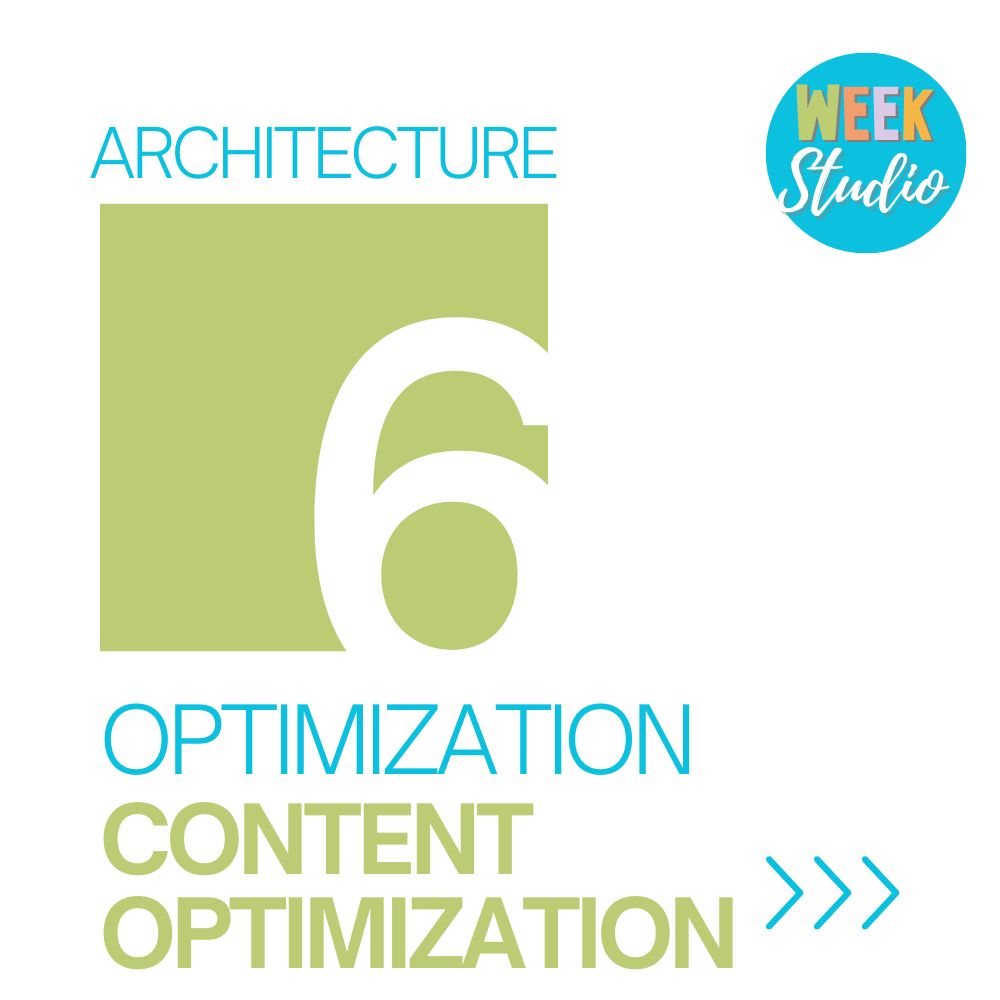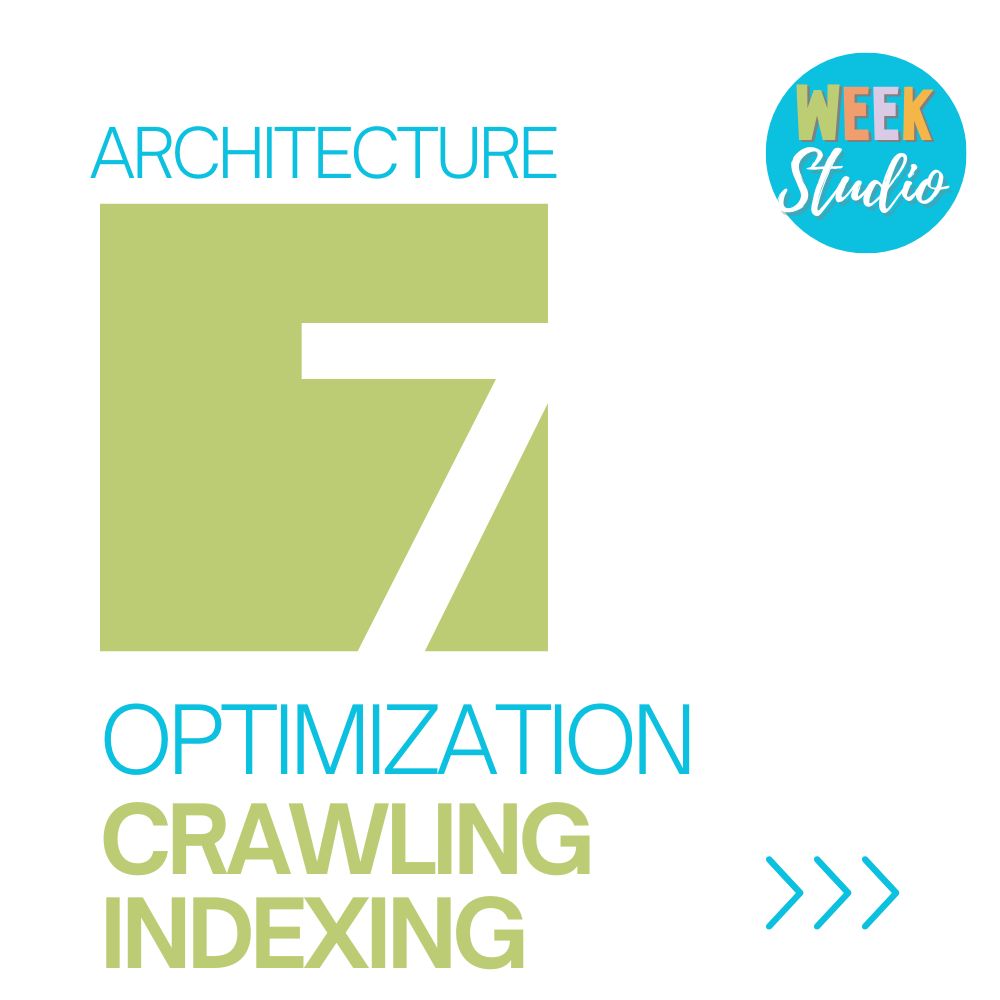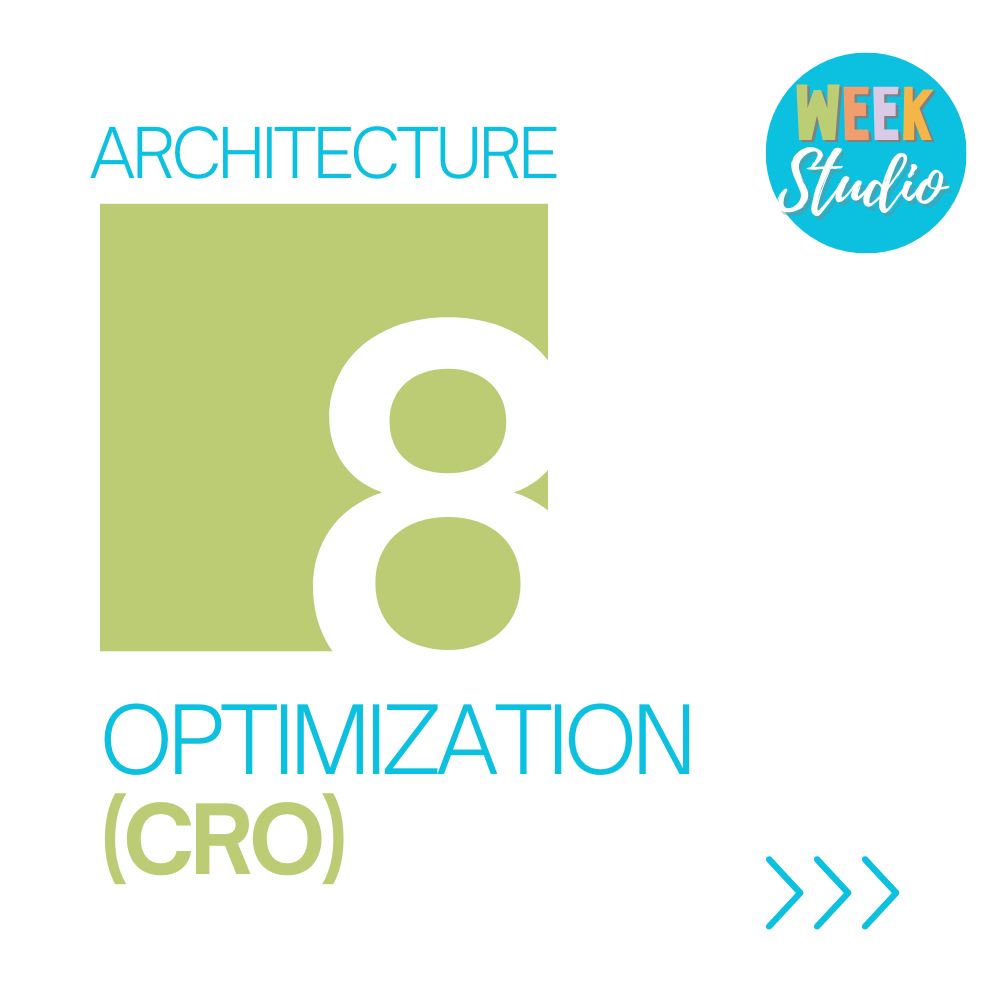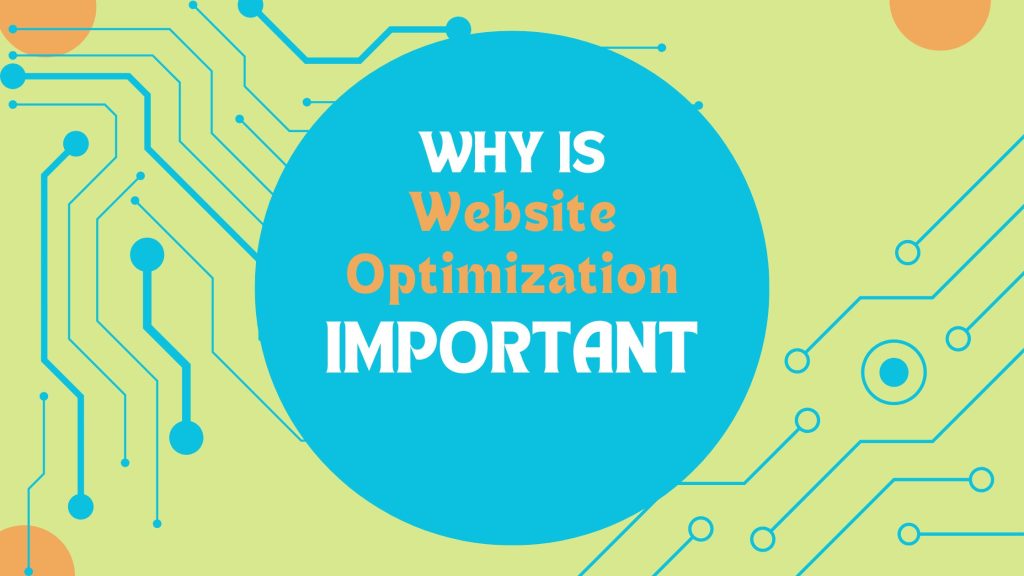In the vast and ever-evolving landscape of the internet, where millions of websites compete for attention, the importance of website optimization cannot be overstated. It’s not merely a technical endeavor; it’s the art of sculpting a digital presence that not only attracts but engages and satisfies the ever-discerning online audience.
Picture this – you have a beautifully designed storefront, but the doors are squeaky, the shelves are disorganized, and finding what you need feels like navigating a maze. Would you stay for long? The same principle applies to websites. No matter how visually appealing a website is, if it’s not optimized for a seamless user experience, visitors may exit faster than they arrived.
In this digital age, where user expectations are high, and attention spans are short, website optimization emerges as the cornerstone of success. It’s the secret sauce that makes your website not just a virtual space but a destination where users willingly linger, explore, and, most importantly, convert. Join me as we unravel the layers of website optimization, exploring its impact on user experience, search engine visibility, and the overall success of your digital endeavors. Let’s embark on a journey to understand why website optimization isn’t just a choice; it’s a necessity in the dynamic world of the World Wide Web.
Bref Website Optimization

At its core, website optimization is the process of enhancing various elements of your website to improve its performance, user experience, and visibility on search engines. It’s not a single-task endeavor but a holistic approach that involves tweaking different facets to achieve an optimal online presence. Let’s break down the key components that make up this intricate process:
Definition and Components of Website Optimization
Website optimization encompasses a range of factors, starting with the fundamental goal of providing visitors with a seamless and satisfying experience. This involves optimizing the website’s structure, content, and other elements to align with user expectations and industry standards.
- Speed Matters: Importance of Fast Loading Websites Website speed is not just a technical consideration; it profoundly influences user satisfaction and search engine rankings. Research indicates that users tend to abandon sites that take too long to load, highlighting the critical nature of a swift and responsive website.
- Mobile-Friendly Design: Catering to the Mobile Audience With the increasing prevalence of mobile devices, optimizing your website for mobile viewing is no longer optional – it’s mandatory. Responsive design ensures that your site adapts seamlessly to various screen sizes, enhancing user experience and positively impacting SEO.
- SEO Optimization: Enhancing Visibility and Rankings Search Engine Optimization (SEO) is the backbone of website optimization. It involves fine-tuning your website to align with search engine algorithms, making it more likely to appear in relevant search results. From keyword optimization to meta tags, SEO plays a pivotal role in driving organic traffic.
- User Experience: The Heart of Website Optimization Beyond technical aspects, user experience (UX) is the soul of website optimization. It involves creating an interface that is intuitive, visually appealing, and easy to navigate. A positive UX not only retains visitors but also contributes to higher conversion rates.
We’ll dive deeper into each of these aspects, unraveling the intricacies of website optimization and understanding why each element is indispensable for a thriving online presence. Let’s explore the importance of speed, mobile-friendliness, SEO, and user experience in detail.
User Experience and Website Optimization

In the realm of the internet, where a user’s attention is akin to a precious commodity, the role of user experience (UX) stands out as a critical factor in the success of any website. Website optimization, at its core, is a journey towards enhancing and perfecting this user experience. But why is user experience so crucial, and how does it intertwine with website optimization?
The Impact of Website Optimization on User Experience
- First Impressions Matter: When a user lands on your website, you have a fraction of a second to make an impression. A well-optimized site ensures that this first encounter is smooth, visually appealing, and encourages users to explore further.
- Navigation Simplicity: Website optimization involves creating an intuitive navigation structure. Imagine a well-signposted road versus a confusing labyrinth – which one would you prefer?
- Page Loading Speed: One of the most crucial aspects of user experience is the speed at which pages load. A slow-loading website can frustrate users and lead to swift exits. Optimization techniques, such as image compression and efficient coding, contribute to swift page loading.
- Responsive Design: With the diversity of devices used to access the internet, a website must adapt seamlessly to different screen sizes. An optimized, responsive design ensures a consistent and enjoyable experience, whether the user is on a desktop, tablet, or smartphone.
How User Experience Enhances Website Success
- Reduced Bounce Rates: A user-friendly website, optimized for a seamless experience, reduces bounce rates. Visitors are more likely to explore and engage when they find the content they need without unnecessary hurdles.
- Increased Time on Site: An engaging and well-optimized site encourages users to spend more time exploring. Whether it’s informative content, engaging visuals, or interactive elements, a positive user experience contributes to extended site visits.
- Higher Conversion Rates: Users are more likely to convert – whether it’s making a purchase, filling out a form, or subscribing – when their journey through the website is smooth and satisfying. Optimization plays a pivotal role in creating conversion-friendly pathways.
In essence, website optimization is the art of putting the user at the center of the digital experience. It’s about crafting an online environment where visitors don’t just browse; they enjoy the journey, interact with content, and, ultimately, take the desired actions that define success for your website. As we continue our exploration, let’s dive into another critical aspect of website optimization – its impact on search engine visibility. How does an optimized website fare in the vast landscape of search engine rankings? Let’s find out.
Search Engine Visibility

In the vast digital expanse where information abounds, standing out amidst the competition requires more than just a visually appealing website. Enter the realm of search engine visibility, where website optimization plays a pivotal role in determining the prominence of your digital presence. But what exactly is search engine visibility, and why is it a game-changer in the world of website optimization?
The Connection Between Website Optimization and Search Engine Rankings
- Understanding Search Engine Algorithms: Search engines employ complex algorithms to determine the relevance and authority of websites. Website optimization aligns your digital space with the preferences of these algorithms, influencing how your site is perceived and ranked.
- Keyword Optimization: An integral part of website optimization involves strategically incorporating relevant keywords into your content, meta tags, and headers. This not only aids search engines in understanding the theme of your content but also enhances your visibility for specific search queries.
- Quality Content Matters: Search engines prioritize high-quality, valuable content. Website optimization includes crafting content that not only caters to user needs but also aligns with the expectations of search engine algorithms.
Strategies to Enhance Search Engine Visibility
- On-Page SEO Techniques: Optimize individual pages with on-page SEO techniques, including keyword-rich content, meta descriptions, and headers. This ensures that search engines can efficiently crawl and index your content.
- Quality Backlinks: Building quality backlinks from reputable websites is a crucial aspect of website optimization. Search engines consider backlinks as a vote of confidence, enhancing your site’s authority and visibility.
- Mobile Optimization: As the majority of internet users access content through mobile devices, optimizing your site for mobile responsiveness is not just user-centric but also aligns with search engine preferences. Mobile-friendly sites often rank higher in search results.
- Site Speed and Performance: Search engines, especially Google, prioritize sites with fast loading times. Website optimization involves strategies to enhance site speed, such as optimizing images, leveraging browser caching, and minimizing server requests.
The Impact of Search Engine Visibility on Website Success
- Increased Organic Traffic: Users often trust and click on results that appear at the top of search pages.
- Enhanced Credibility and Trust: Websites that consistently appear in top search results are perceived as more credible and trustworthy by users. Search engine visibility contributes to building a positive online reputation.
- Competitive Advantage: In competitive industries, search engine visibility becomes a significant differentiator. Outranking competitors in search results can position your website as a go-to resource in your niche.
As we navigate the interplay between website optimization and search engine visibility, the next segment will shed light on the vital relationship between mobile responsiveness and site architecture. Join me in exploring how catering to the preferences of mobile users can significantly impact your website’s success in the digital realm.
Mobile Responsiveness and Website Optimization

In an era where smartphones have become an extension of our daily lives, the significance of mobile responsiveness in website optimization cannot be overstated. Mobile devices have revolutionized the way users access the internet, and a well-optimized website adapts seamlessly to this changing landscape. Let’s delve into why mobile responsiveness is a crucial aspect of website optimization and how it shapes the user experience and search engine rankings.
The Significance of Mobile-Friendly Design
- Changing User Behavior: A substantial portion of internet users now accesses websites through mobile devices. Mobile-friendly design acknowledges and accommodates this shift in user behavior, ensuring that your site caters to the preferences of a diverse audience.
- Google’s Mobile-First Indexing: Google, the leading search engine, has adopted a mobile-first indexing approach. A mobile-friendly website is more likely to perform well in search results.
- Enhanced User Experience: Mobile responsiveness is not just about fitting content onto smaller screens; it’s about creating an optimized experience tailored for mobile users. Easy navigation, readable fonts, and efficient load times contribute to a positive mobile user experience.
Strategies for Mobile Optimization
- Responsive Design: Adopt a responsive design approach that ensures your website adapts fluidly to various screen sizes. This eliminates the need for a separate mobile site and provides a consistent experience across devices.
- Touch-Friendly Navigation: Mobile users interact with screens through touch gestures. Optimize your website’s navigation for touch, ensuring buttons are easily tappable, and menus are accessible without precision clicking.
- Image and File Optimization: Compress images and optimize files to reduce load times on mobile devices.
- Avoid Flash and Pop-Ups: Flash content is not supported on many mobile devices, and intrusive pop-ups can hinder the user experience. Optimize your site by avoiding these elements or ensuring they are mobile-friendly.
Impact on User Engagement and SEO
- Reduced Bounce Rates: A mobile-friendly site contributes to reduced bounce rates. Users are more likely to engage with content when it is easily accessible and readable on their mobile devices.
- Improved Search Rankings: Google rewards mobile-friendly websites with higher search rankings. Mobile responsiveness is a ranking factor, and an optimized site stands a better chance of securing top positions in search results.
- Broader Audience Reach: Mobile optimization ensures that your website reaches a broader audience. Whether users are on smartphones or tablets, a seamless mobile experience increases the likelihood of user engagement and conversions.
As we navigate the mobile-responsive corridors of website optimization, the next section will explore the importance of speed and performance in enhancing the overall user experience and search engine rankings. Join me in uncovering the strategies to ensure your website doesn’t just load but does so swiftly and efficiently.
Site Speed and Performance Optimization

In the fast-paced digital era, where time is a precious commodity, the speed at which a website loads can make or break the user experience. Site speed is not only a user-centric consideration but also a critical factor in website optimization that influences search engine rankings. Let’s delve into why site speed matters, how it impacts user engagement, and the strategies for optimizing the performance of your digital space.
Understanding the Significance of Site Speed
- User Expectations: Users expect websites to load quickly. In a world where information is just a click away, a delay of even a few seconds can lead to frustration and prompt users to abandon a site.
- Search Engine Preferences: Search engines, particularly Google, prioritize fast-loading websites. Page speed is a ranking factor, and faster sites often perform better in search engine results.
- Impact on Conversions: Site speed directly correlates with conversion rates. Whether it’s completing a purchase or filling out a form, users are more likely to take action on a website that offers a swift and smooth experience.
Strategies for Speed and Performance Optimization
- Image Compression: Large images can significantly slow down page loading times. Optimize images by compressing them without compromising quality. This ensures that visual content doesn’t compromise site speed.
- Browser Caching: Enable browser caching to store certain elements of your website on a user’s device after their initial visit. This reduces the need to reload the entire page on subsequent visits, contributing to faster loading times.
- Minimize HTTP Requests: Each element on a webpage, be it an image, script, or stylesheet, requires a separate HTTP request. Minimize the number of elements to reduce the overall number of requests, enhancing site speed.
- Content Delivery Network (CDN): Utilize a CDN to distribute your website’s static content across servers worldwide. This ensures that users can access content from a server closer to their geographical location, reducing latency and improving load times.
The Impact on User Engagement and SEO
- Reduced Bounce Rates: A fast-loading website is likely to have lower bounce rates. Users are more inclined to explore and engage with content when they aren’t kept waiting.
- Extended Time on Site: Swift load times contribute to users spending more time on your site. They can seamlessly navigate between pages and engage with content without disruptions.
- Search Engine Rankings: A faster website is more likely to rank higher in search engine results, providing a competitive advantage in the digital landscape.
As we navigate the acceleration lanes of website optimization, the next segment will delve into the crucial aspects of crawling and indexing. Understanding how search engines crawl and index your content is essential for effective optimization. Join me in exploring the strategies to ensure that your website is easily discoverable by search engines.
Content Optimization

In the dynamic arena of digital presence, content reigns supreme. However, creating compelling content is just the beginning; ensuring it’s optimized for both users and search engines is the key to unlocking success. Let’s delve into the realm of content optimization, exploring why it’s crucial, how it impacts user engagement and search rankings, and the strategies to create SEO-friendly content.
The Impact of Optimized Content
- Meeting User Intent: Optimized content aligns with user intent. Understanding what users are searching for and tailoring your content to address their needs enhances the overall user experience.
- Search Engine Relevance: Optimized content, rich in keywords and structured for readability, signals to search engines that your content is valuable and pertinent.
- Increased Visibility: SEO-friendly content contributes to increased visibility in search engine results. When users search for topics related to your content, a well-optimized piece stands a better chance of being prominently displayed.
Strategies for Content Optimization
- Quality and Relevance: Prioritize the quality and relevance of your content. High-quality, informative, and engaging content not only satisfies user intent but also earns credibility with search engines.
- Headings and Subheadings: Headings not only improve readability for users but also provide a hierarchical structure that search engines use to understand the organization of your content.
- Meta Descriptions: Craft compelling meta descriptions for your pages. While not a direct ranking factor, well-written meta descriptions can influence click-through rates from search engine results, contributing to improved visibility.
- Internal Linking: This not only guides users to related information but also aids search engines in understanding the relationships between different pages on your site.
User Engagement and SEO Benefits
- Increased Dwell Time: Dwell time, the amount of time a user spends on a page after clicking a search result, is influenced by engaging content. Optimized content encourages users to stay longer, signaling to search engines that the content is valuable.
- Reduced Bounce Rates: Content that fulfills user intent reduces bounce rates. Users are more likely to engage with comprehensive and well-optimized content, contributing to a positive user experience.
- Social Sharing: Quality content often gets shared on social media platforms. Social signals, such as likes, shares, and comments, indirectly impact SEO by increasing visibility and driving traffic to your site.
As we traverse the landscape of content optimization, the next segment will shed light on the vital role of crawling and indexing in ensuring that your optimized content is effectively discovered by search engines. Join me in exploring the mechanisms that govern how search engines explore and catalog your digital footprint.
Crawling and Indexing

In the intricate dance between your website and search engines, crawling and indexing emerge as the silent choreographers. Understanding how search engines explore, crawl, and index your content is fundamental to effective website optimization. Let’s unravel the nuances of crawling and indexing, exploring their significance, and delving into strategies that ensure your digital footprint is easily discoverable.
The Dynamics of Crawling
- Crawling Defined: Crawling is the process by which search engine bots systematically navigate the internet, moving from one page to another via links. This allows search engines to discover and retrieve information from web pages.
- The Role of robots.txt: The robots.txt file serves as a guide for search engine crawlers, indicating which pages should be crawled and which should be excluded. Optimizing your robots.txt file ensures that search engines focus on relevant content.
- XML Sitemaps: Creating and submitting XML sitemaps to search engines provides a roadmap of your website’s structure. This assists crawlers in efficiently navigating and indexing your content.
The Essence of Indexing
- Indexing Defined: Indexing is the process of storing and cataloging information gathered during crawling. Search engines create an index—a database of all the information collected—that serves as the basis for delivering relevant search results.
- Meta Tags and Indexing: Meta tags, including meta titles and descriptions, play a crucial role in indexing. Well-optimized meta tags provide concise information about the content, aiding search engines in accurately categorizing and indexing pages.
- Canonical Tags: Canonical tags help prevent duplicate content issues by specifying the preferred version of a page. By guiding search engines to the primary source, canonical tags contribute to efficient indexing.
Strategies for Effective Crawling and Indexing
- Optimize Site Structure: A clear and logical site structure enhances crawling and indexing. Ensure that your site is well-organized, with a hierarchy that reflects the importance of different pages.
- Use Internal Links Wisely: Internal linking creates pathways for crawlers to navigate your site. Strategic internal linking ensures that all relevant pages are discovered, contributing to comprehensive indexing.
- Prioritize High-Value Pages: Direct crawlers to prioritize high-value pages by optimizing internal links, XML sitemaps, and robots.txt directives. This ensures that critical content is promptly discovered and indexed.
- Regular Content Updates: Regularly updating your content signals to search engines that your site is dynamic and relevant. This encourages frequent crawling and indexing, keeping your digital content fresh in search results.
Impact on User Engagement and SEO
- Faster Content Discovery: Efficient crawling and indexing mean that new content is discovered swiftly by search engines. This accelerates its availability in search results, benefiting both users and content creators.
- Enhanced Search Rankings: A well-crawled and indexed site stands a better chance of achieving higher search rankings. This visibility is crucial for attracting organic traffic and increasing user engagement.
- Improved User Experience: Users benefit from effective crawling and indexing as it ensures that search results are up-to-date and relevant. A seamless user experience begins with search results that match user intent.
As we navigate the intricate pathways of crawling and indexing, the next stop is understanding the significance of canonicalization—a technique that aids in resolving potential duplicate content issues. Join me in unraveling the nuances of canonical tags and their role in maintaining the integrity of your digital content.
Conversion Rate Optimization (CRO)

In the digital landscape, driving traffic to your website is only part of the equation. The ultimate goal is to convert visitors into engaged users, subscribers, or customers. This is where Conversion Rate Optimization (CRO) steps into the spotlight. Let’s explore the significance of CRO, understand how it impacts user actions, and uncover strategies to optimize your website for conversions.
The Essence of Conversion Rate Optimization
- Defining Conversion: A conversion occurs when a visitor takes a desired action on your website. This could be making a purchase, filling out a form, subscribing to a newsletter, or any action that aligns with your business objectives.
- The Role of CRO: Conversion Rate Optimization is the systematic process of enhancing your website to increase the percentage of visitors who complete a desired action. It’s about creating a seamless journey that encourages users to take the next step.
Strategies for Effective Conversion Rate Optimization
- Clear Call-to-Action (CTA): Strategically place clear and compelling CTAs across your website. Whether it’s “Buy Now,” “Subscribe,” or “Learn More,” CTAs guide users towards the desired actions.
- A/B Testing: Implement A/B testing to experiment with different versions of elements on your website, such as headlines, buttons, or images. Analyzing user responses helps identify the most effective elements for driving conversions.
- Optimized Forms: If your website involves form submissions, streamline the process. Optimize form fields, minimize the number of steps, and ensure that users receive feedback on successful submissions.
- Trust Signals: Build trust with your audience through trust signals such as customer testimonials, security badges, and clear privacy policies.
Impact on User Engagement and SEO
- Improved User Experience: CRO focuses on creating a user-centric experience, making it easy for visitors to navigate and take action. A positive user experience contributes to increased engagement and higher conversion rates.
- Higher Conversion Rates: The primary goal of CRO is to boost conversion rates. By understanding user behavior and optimizing your website accordingly, you create an environment that encourages users to convert.
- Enhanced SEO Performance: While not a direct ranking factor, higher conversion rates often lead to increased user engagement, longer time spent on site, and lower bounce rates. These positive signals indirectly contribute to improved SEO performance.
As we navigate the realm of Conversion Rate Optimization, the next section will unravel the metrics and analytics tools that provide insights into the effectiveness of your website optimization efforts. Join me in exploring the key performance indicators that guide the continuous improvement of your digital space.
Analyzing Success: Key Metrics

In the dynamic world of digital optimization, understanding the performance of your website is crucial for making informed decisions and driving continuous improvement. Key Performance Indicators (KPIs) serve as the compass, guiding you through the metrics that unveil the effectiveness of your site architecture and optimization strategies. Let’s delve into the essential metrics and analytics tools that empower you to measure success and refine your digital presence.
Key Performance Indicators for Site Architecture
- Bounce Rate:
- Significance: A high bounce rate may indicate that visitors are not finding what they’re looking for or that site architecture needs improvement.
- Average Time on Page:
- Definition: The average amount of time users spend on a particular page.
- Significance: Pages with low average time on page may need content enhancements or better navigation to retain user interest.
- Page Load Speed:
- Definition: The time it takes for a page to fully load.
- Significance: Slow-loading pages can contribute to high bounce rates. Optimizing page speed enhances user experience and may positively impact rankings.
- Conversion Rates:
- Definition: The percentage of visitors who complete a desired action, such as making a purchase or filling out a form.
- Significance: Conversion rates directly reflect the effectiveness of site architecture and optimization in encouraging user actions.
- User Flow:
- Definition: The visual representation of how users navigate through a website.
- Significance: Analyzing user flow helps identify effective pathways and potential bottlenecks in site architecture.
Utilizing Analytics Tools for Site Optimization
- Google Analytics:
- Significance: Provides detailed insights into user behavior, traffic sources, and site performance. Utilize features like Behavior Flow, Site Speed reports, and Conversion Tracking for comprehensive analysis.
- Heatmaps and User Session Recordings:
- Significance: Tools like Hotjar or Crazy Egg offer visual representations of user interactions. Heatmaps highlight areas of user interest, while session recordings provide firsthand views of how users navigate your site.
- A/B Testing:
- Significance: Implement A/B testing to compare different versions of your site architecture. Test variations in navigation, layout, or calls to action to optimize for user engagement and conversions.
- Search Console:
- Significance: Provides data about how search engines perceive and interact with your site. Monitor crawl errors, index coverage, and search queries to ensure alignment with search engine expectations.
Measuring and Adapting
By regularly monitoring these KPIs and leveraging analytics tools, you gain actionable insights into the performance of your site architecture. Data-driven decision-making allows you to adapt and optimize your site continuously, ensuring that it remains aligned with user expectations and search engine requirements.
As we conclude our exploration of key metrics, the next section will synthesize the insights gathered throughout this journey, emphasizing the pivotal role of a well-structured digital framework. Join me in summarizing the profound impact of site architecture optimization on digital success.
Adapting to Industry Trends

In the ever-evolving digital ecosystem, staying ahead requires not only a well-optimized site architecture but also an acute awareness of industry trends. Adapting to these trends ensures that your website remains relevant, engaging, and aligned with the evolving expectations of users and search engines. Let’s explore the importance of staying current with industry trends and strategies to navigate the dynamic digital landscape.
The Dynamic Nature of Digital Trends
- Emergence of New Technologies:
- As technology advances, new trends such as voice search, augmented reality, or artificial intelligence may shape user interactions. Adapting your site architecture to incorporate these technologies can enhance user experiences.
- Shifts in Search Engine Algorithms:
- Staying informed about algorithm updates and adjusting your optimization strategies ensures that your site remains visible in search results.
- Changing User Behavior:
- User behavior evolves in response to cultural, social, and technological changes. Understanding these shifts helps in tailoring your site architecture to meet the changing expectations and preferences of your target audience.
Strategies for Adapting to Trends
- Regular Industry Research:
- Stay informed about the latest trends in your industry. Monitor industry publications, attend webinars, and engage with relevant communities to understand emerging technologies and user preferences.
- Mobile-First Approach:
- With an increasing number of users accessing the internet via mobile devices, adopting a mobile-first approach ensures that your site architecture is optimized for a seamless mobile experience.
- Content Relevance:
- Content trends shift over time. Regularly assess your content strategy to ensure that it aligns with current user interests and search engine expectations. Incorporate multimedia, interactive elements, and other engaging formats.
- Security and Privacy Compliance:
- As user concerns about privacy and data security grow, ensuring that your site complies with relevant regulations and incorporates secure practices becomes crucial. This can include implementing HTTPS, securing user data, and transparent privacy policies.
Impact on User Engagement and SEO
- Enhanced User Engagement:
- Adapting to current trends keeps your website fresh and engaging, contributing to increased user satisfaction. Users are more likely to engage with a site that aligns with their current preferences and technological habits.
- Improved SEO Performance:
- Search engines reward websites that embrace current trends and provide enhanced user experiences. Staying ahead of industry shifts positions your site favorably in search engine rankings, contributing to improved visibility.
- Competitive Advantage:
- Embracing trends gives you a competitive edge. Websites that are quick to adopt new technologies and align with user expectations stand out in the crowded digital landscape.
As we navigate the currents of industry trends, the next section will wrap up our exploration with a comprehensive overview of the importance of site architecture optimization. Join me in summarizing the key takeaways and reinforcing the significance of a well-structured digital framework in achieving sustained success.
Conclusion
In the vast and dynamic landscape of the digital realm, the success of your online presence hinges on the meticulous crafting of your site architecture. The journey through site architecture optimization is not merely a technical endeavor but an artful orchestration that harmonizes user experiences, search engine visibility, and industry trends. Let’s recap the key takeaways that underscore the crucial role of site architecture optimization in achieving sustained success:
- User-Centric Foundation: Introduction to User Experience: At the heart of site architecture optimization lies a commitment to delivering exceptional user experiences. From the first impression to seamless navigation, user-centric design ensures that visitors not only stay but engage and convert.
- Search Engine Visibility: Understanding Search Engine Algorithms: The marriage of user-centric design and search engine visibility is essential. By aligning your site with search engine algorithms through strategic keyword optimization, quality content, and mobile responsiveness, you enhance its discoverability.
- Mobile Responsiveness: Adapting to Mobile Trends: The surge in mobile device usage mandates a mobile-first approach. Ensuring your site is not only responsive but tailored for diverse screen sizes is paramount for meeting the expectations of an on-the-go audience.
- Speed and Performance Optimization: Swift Load Times: In the race against time, site speed emerges as a game-changer. Optimizing load times not only improves user experience but also aligns with search engine preferences, contributing to higher rankings.
- Crawling and Indexing: Navigating Search Engines: A well-optimized site architecture facilitates efficient crawling and indexing by search engines. From strategic internal linking to the use of canonical tags, these elements guide search engines in understanding and cataloging your digital footprint.
- Content Optimization: Crafting Valuable Content: The backbone of user engagement and search engine relevance is optimized content. Keyword-rich, well-structured content, coupled with effective internal linking, ensures your site communicates its thematic relevance.
- Conversion Rate Optimization (CRO): Driving Desired Actions: Beyond engagement, the goal is conversion. CRO refines your site to guide users seamlessly toward actions that align with your business objectives, whether it’s making a purchase or subscribing to updates.
- Analyzing Success: Key Metrics: Data-Driven Insights: Regularly monitoring key metrics using analytics tools provides actionable insights. From bounce rates to conversion rates, these metrics guide your decision-making, enabling continuous improvement.
- Adapting to Industry Trends: Staying Ahead: The digital landscape evolves, and staying ahead requires adapting to emerging technologies, shifts in search engine algorithms, and changing user behaviors. Embracing trends ensures your site remains relevant and competitive.
In conclusion, site architecture optimization is a holistic journey that encompasses technical prowess, user empathy, and a commitment to staying abreast of industry shifts. As you navigate this multifaceted terrain, remember that success lies not just in the destination but in the continuous refinement and adaptation of your digital presence. By crafting a well-optimized site architecture, you not only meet the needs of today’s users and search engines but position yourself for sustained success in the ever-evolving digital future.
FAQs: Navigating Site Architecture Optimization
- What is Site Architecture Optimization? Site Architecture Optimization is the strategic and user-focused process of organizing and structuring a website to enhance user experiences, improve search engine visibility, and drive desired actions. It involves optimizing elements such as navigation, content hierarchy, mobile responsiveness, and page speed to create a seamless and effective digital presence.
- Why is Mobile Responsiveness Important in Site Architecture? Mobile responsiveness is crucial because of the increasing number of users accessing the internet through mobile devices. A mobile-friendly site not only provides a better user experience but also aligns with search engine preferences. Google, for instance, uses mobile-first indexing, making mobile optimization essential for visibility in search results.
- How Does Site Speed Impact User Engagement and SEO? Site speed directly influences user engagement and search engine rankings. Users expect fast-loading pages, and a delay of just a few seconds can lead to higher bounce rates. Search engines, particularly Google, prioritize fast-loading sites, considering it a ranking factor that contributes to improved SEO performance.
- What Role Does Content Optimization Play in Site Architecture? Content optimization is integral to site architecture as it involves creating high-quality, relevant, and structured content. Optimized content, enriched with strategic keywords, clear headings, and internal links, not only engages users but also signals to search engines that your site is valuable and aligned with user intent.
- How Can Conversion Rate Optimization (CRO) Benefit My Website? Conversion Rate Optimization (CRO) focuses on enhancing the percentage of visitors who take desired actions on your site, such as making a purchase or filling out a form. Effective CRO improves user experiences, increases conversion rates, and contributes to business goals, making your website more successful in achieving its objectives.
- What Metrics Should I Monitor for Site Optimization?
Key metrics for site optimization include:
- Bounce Rate: Indicates the percentage of visitors leaving after viewing one page.
- Average Time on Page: Reflects the average time users spend on a particular page.
- Page Load Speed: Measures the time it takes for a page to fully load.
- User Flow: Visualizes how users navigate through your website.
Monitoring these metrics provides insights into user engagement, site performance, and the effectiveness of optimization strategies.
- How Can I Stay Updated on Industry Trends in Website Optimization? To stay updated on industry trends, regularly engage with industry publications, attend webinars, and participate in relevant online communities. Following leading voices in the field, exploring new technologies, and monitoring changes in search engine algorithms are essential practices to stay ahead in the dynamic digital landscape.
Remember, the digital realm is ever-evolving, and adaptability is key to maintaining a successful online presence. Stay curious, keep refining your strategies, and embrace the ongoing journey of site architecture optimization.
